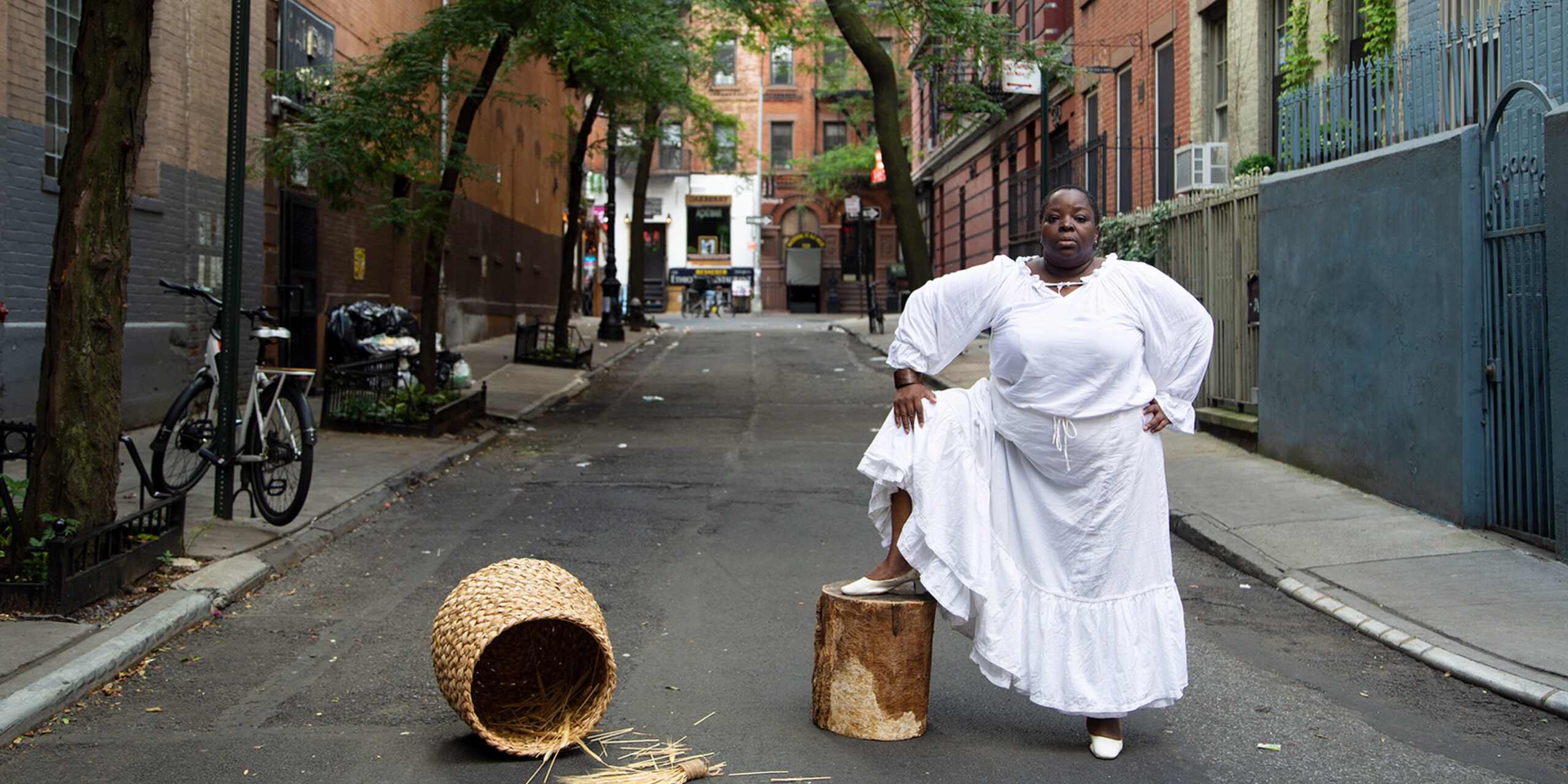In ‘White Shoes’ Faustine poses in various states of undress in locations around New York where slaves were bought and sold.
“The land is all we have after everything has been erased,” said White Shoes photographer Nona Faustine as she sat center stage at the Brooklyn Museum. Her poignant words echoed through the microphone and across the museum’s auditorium.
The New York native joined to talk about the recent publication of her photography series White Shoes, which consists of self-portraits taken in New York where slave auctions, burial grounds, and slave-owning farms previously stood and the coastal areas where slave ships docked.
Faustine has been living and breathing White Shoes for the past ten years. The series was initially shown in 2016 at Smack Mellon Gallery in Brooklyn and has finally come together in its completion in book form published by Mack Books with contributions from Jessica Lanay, Pamela Sneed, and Seph Rodney.
The discussion session began with an introduction by Eugenie Tsai, the John and Barbara Volgelstein, senior curator of Contemporary Art at the Brooklyn Museum. After brief introductions and pleasantries, Tsai noted, “I’d like to take a moment to acknowledge that we are currently located on land that is part of the unseated ancestral homeland of the Delaware nations…I would also like to pay tribute to the enslaved people who built the foundation of our country.” Tsai’s words bear particular poignance as an echo to Faustine’s themes.
While many New York City residents see themselves as standing apart from the rest of the country and as one of the most progressive cities in the world, introductions like Tsai’s are few and far between. Many New Yorkers often fail to acknowledge or are not even aware of the barbaric history of the land we have evolved on. Faustine’s series acts as an important reminder of the erasure of this history.
In most White Shoes, Faustine poses either nude or partially nude except for a pair of white kitten heel pumps, intended to reference the white patriarchy. She shot in locations such as The Brooklyn Botanical Garden and the New York State Supreme Court. The photographer’s nudity acts as a way to make her body—as is noted by Seph Rodney in his introductory essay The Naked Power Suit—“hypervisible, to place her body where it can’t be ignored” and acts as a memorial for the Black bodies that have been blotted out of historical accounts. In each photograph, she positions herself in intentional poses while holding and wearing symbolic and thoroughly researched props.
In her photographs, Faustine acts as an agent of the intersection between the past and the present. In an interview with Mission, Faustine opened up about her experience shooting, “it has to do with being on another level of interacting with the creative spirit, acting as a conduit or receptor to history and receive,” she says.
One of her last photos of the series entitled “Resist! Maiden Lane’’ which was shot on July 4th, 2021, on William Street, the site of the 1712 Slave Rebellion, encapsulates this sensation. In the photo, Faustine stands alone in the middle of the unusually vacant New York cross street. She’s captured wearing a long white skirt that drapes down to her ankles, leaving just enough room to see a peek of the white shoes. Above her bare chest, she wore a black sunhat which created a slight shade covering her eyes. She stands in a power pose with her back to Wall Street, holding a musket in the air, symbolizing the past. In the corner of the shot, a small section of a man on a motorized bicycle is caught in the frame capturing a slice of the modern city waking up.
While recounting her experience capturing this photo, Faustine explains that she was very aware of the fortress-like building surrounded by police cars next to her shot. It wasn’t until she got home that day that she realized the conspicuous building was the National Reserve bank of New York, the building that holds the most gold in the world. “How close did I come to being involved in an incident,” Faustine says. “My thoughts of raising and pointing that musket in the air. How many cases of Black Americans being blown away for holding fake guns and no guns. The irony of that building on the site of a slave rebellion. Africans epitomized the fight for freedom and democracy in America before 1776.”
Most of Faustine’s work focuses on themes such as history, identity, representation, and racial and gender stereotypes. Her series, My Country, deals with history more conceptually and picks up where White Shoes leaves off. In My Country, Faustine confronts and interrogates iconic American monuments. She reframes conventional perspectives through a literal and figurative lens that inserts truth and trauma in these spaces.
Although Faustine’s future projects are yet to be determined, she assures Mission that “continuing to make incredible work is definite.”
Images courtesy of Nona Faustine





